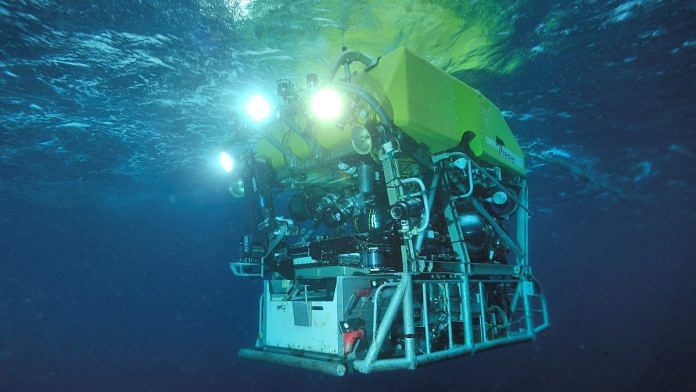New Delhi: The frantic search for the submersible ‘Titan’ that went missing in the North Atlantic — with five people onboard — entered a critical stage Thursday as rescuers feared the vessel may have just a little amount of oxygen left.
An international effort, especially by the US and Canadian military, was launched hours after the submersible went missing Sunday, during a dive to the wreckage of the Titanic.
A Canadian aircraft has since detected undersea “banging sounds” at 30-minute intervals in the search area. The noises were recorded using sonar buoys, a 13-cm diameter sonar system that is used for anti-submarine warfare or underwater acoustic research.
The submersible, which took the dive at 8.15am Sunday, has an emergency air capacity of 96 hours. The oxygen supply in the vessel was likely to exhaust around 7.15 pm Thursday.
Those onboard include British billionaire Hamish Harding, Pakistani businessman Shahzada Dawood and his 19-year-old son Suleman, French explorer Paul-Henry Nargeolet and pilot Stockton Rush, who is also the CEO of OceanGate that owns the submersible.
According to a report in The New York Times, Wendy Rush, who is married to Stockton, is the great-great-granddaughter of retailing magnate Isidor Straus and his wife, Ida, two of the wealthiest people who were aboard the Titanic’s maiden voyage when it sank.
Deep-sea mapping equipment, a French robot
A British Navy submariner and equipment from a UK-based firm has also joined the rescue operation. ‘Specialist commercial equipment’ from deep-sea mapping company Magellan were transported to Newfoundland using a British C-17 aircraft.
Meanwhile, a French deep sea robot, called Victor 6000, that can dive up to 20,000 feet (6,000 meters) underwater was also on its way to help locate the missing submersible.
Victor 6000, operated by Ifremer, the state-run French ocean research institute, has remotely-controllable hands that can be used to cut cables or perform other maneuvers to release a stuck vessel. While it cannot lift the vessel on its own, the robot can help hook it to a ship.
Olivier Lefort, head of naval operations at Ifremer, told Reuters, “Victor is able to do visual exploration with all the video equipment it has. It is also equipped with manipulating arms which could be used to extricate the sub, such as by sectioning cables or things that would be blocking it at the bottom.”
He also said that the robot is operated by 25 crew members who can “work non-stop for up to 72 hours”.
The deep sea robot has reportedly reached the sea floor at the Titanic wreckage site. Medical experts, too, have now joined the rescue operation.
Previous concerns about safety
Safety concerns around the submersible ‘Titan’ were, however, raised by experts and a whistle-blowing employee around five years ago, in 2018.
According to a Reuters report, Will Kohnen, the chairman of peer review group Marine Technology Society’s committee on manned submersibles, had written to OceanGate CEO Stockton on 27 March, 2018, expressing concern about the Titan’s safety.
The letter also mentioned that OceanGate chose not to pursue the industry’s recognised certification process for the submersible’s design, fabrication and testing.
The whistle-blowing employee who remains unnamed had further raised concerns over the material used in the hull of the submersible.
The ‘Titan’ is known to usually carry a pilot, three paying guests and a ‘content expert’. The vessel is 6.7 meter-long (22ft) and has a capacity to carry five people for 96 hours. The vessel, which weighs 23,000 lbs (10,432 kg), has a depth capacity of 4,000 meters (13,100 ft).
‘Designed to automatically resurface after 24 hours’
According to CBS correspondent David Pogue, who went on a validation dive last year in the same submersible, the vessel has only one toilet and no seats. The members have to sit cross-legged on the floor.
Aaron Newman, an investor in OceanGate, has been quoted in an interview with CNN as saying that the ‘Titan’ was designed to automatically resurface after 24 hours.
Newman also said the submersible is held by ballast, heavy weights that help with the vessel’s stability. The crew members could release the ballast by rocking the ship or using a pneumatic pump to knock the weights free. The ballast was designed to automatically fall off after 24 hours to help the vessel resurface on water.
Also read:Submarine that takes tourist to see Titanic wreck goes missing in Atlantic, search underway



